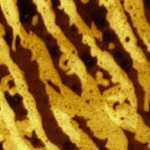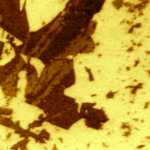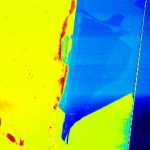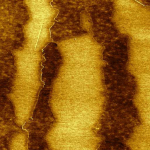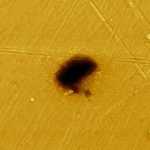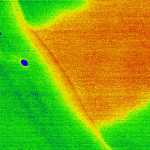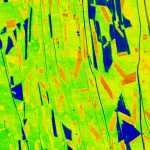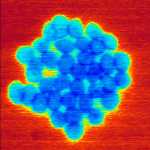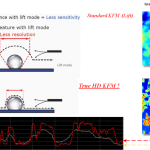Kelvin Force Microscopy (KFM) allows to measure the surface potential between an oscillating conductive tip and the surface. Surface potential measurement can be used to determine intrinsic properties like work function or bandgap. CSInstruments has developed an ultra-sensitive implementation of KFM named as High Definition-KFM (HD-KFM), which uses 2 lock-ins matched to the first two eigenmode frequencies of the cantilever to acquire both topography and surface potential. This setup combines the benefits of the single-pass approach with the enhancement of the electrical signal due to the mechanical resonance matching.
News, events, promotions, webinars
HD-KFM developed by CSI for the Nano-Observer AFM has the advantage of amplifying the feedback signal through the second eigenmode of the cantilever. Also it allows a much closer probe of the electric field created by the surface potential compared to other approaches. This is of extreme relevance when imaging small molecules or bidimensional materials.
- Surface potential mapping
- 2nd lock-in amplifier
- NO LIFT : Very high sensitivity & higher spatial resolution
Much higher sensitivity and resolution
One of the clear advantages of the single pass approach as compared to the double pass implementation is the enhancement of resolution and sensitivity as the tip remains in the noncontact regime, but also much closer to the surface as illustrated in the figure below. A direct comparison between both techniques is made on a graphene sample over a SiC substrate. The contact potential image obtained in single-pass setup provides better contrast and lateral resolution of the graphene domains. This is due to the fact that in a single pass approach, the tip is oscillating closer to the surface (typically 0.1 nm-0.3 nm or touching the surface intermittently) as compared to the doublepass mode or lift mode (typically 10 nm-20 nm). As the electric field decays with the separation distance, standard double-pass has an intrinsic loss of sensitivity and lateral resolution.

